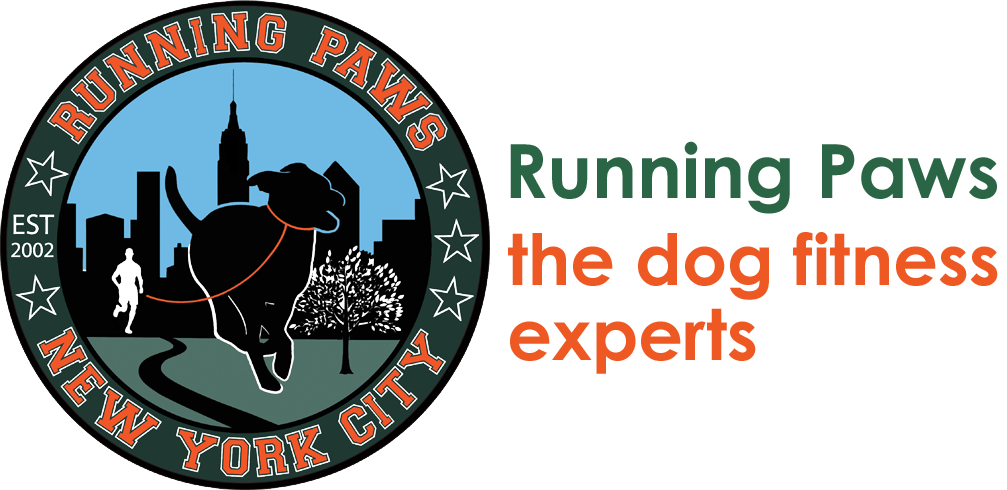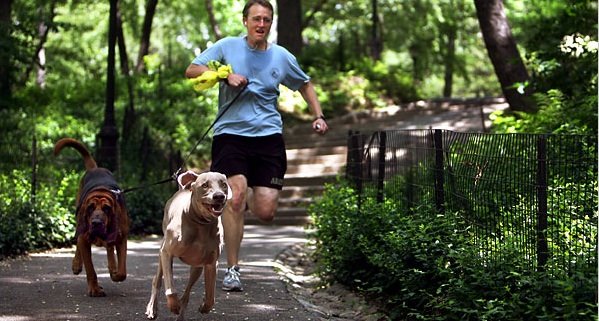The Case for Dog Jogging: Not Just for High-Energy Breeds
Most city dogs don’t need a marathon — but they do need more than a meandering loop around the block.
At Running Paws, we’ve worked with thousands of dogs across Manhattan, and we’ve seen it all: high-octane Vizslas, anxious rescues, mellow senior doodles. And here’s what we know for sure:
Jogging isn’t just for athletic dogs. It’s a powerful tool for mental clarity, emotional balance, and better leash behavior — even in city life.
Here’s why more NYC pet parents are trading in their strolls for structured jogs — and what it could mean for your dog.
1. Movement as Mental Reset
City life is stimulating. Horns, crowds, scaffolding, scooters — it’s a lot for a dog to process. Jogging offers a rhythmic, purposeful pace that helps filter that chaos into something calming.
Unlike slow walks filled with constant decision points (sniff here? detour there?), jogging creates clarity. Your dog doesn’t have to overthink — they just get to move with you.
Dogs crave structure. A steady pace provides just that — especially for reactive or anxious pups who feel overwhelmed by the world around them.
2. Builds Better Behavior (Without “Training”)
Here’s the secret: movement itself is a form of training.
When your dog jogs next to you, they naturally:
Learn to match your pace
Check in visually more often
React less to distractions
Build impulse control with every block
You don’t need to carry a treat pouch or run drills. The act of jogging — consistently and calmly — reinforces everything good: focus, follow-through, and connection.
Looking to deepen the relationship with your dog through movement? Check out this post on structured puppy exercise and bonding for a deeper dive into how physical activity shapes behavior.
3. Energy Burn Without the Chaos
You’ve probably heard, “A tired dog is a good dog.” But tired from what?
Ball-chasing at the dog park? Might just hype them up more.
Social free-for-alls? Can lead to overstimulation.
Aimless long walks? Often fail to challenge or regulate.
Jogging hits the sweet spot: focused exertion without chaos. It leaves your dog pleasantly tired — not frenzied, not fried.
Bonus: dogs who jog regularly tend to be calmer at home, less prone to barking or pacing, and easier to settle at night.
4. Helps Curb Pulling and Reactivity
Dogs who pull hard on leash aren’t being “bad” — they’re usually just frustrated or underchallenged.
Jogging flips the script:
A steady pace reduces leash tension (and the mental pressure that comes with it).
Dogs have fewer opportunities to fixate on squirrels, other dogs, or garbage bags.
The physical rhythm can be deeply grounding for reactive dogs.
For leash pullers, especially large-breed puppies or adolescent dogs, jogging is often the turning point that makes walks manageable again.
5. Not Just for Huskies
People often ask us: “But is jogging right for my dog?”
The answer depends less on breed — and more on personality, age, and energy level. We’ve successfully jogged:
Chihuahuas and mini poodles who crave structure
Senior labs who benefit from steady-paced cardio
Anxious mixed-breeds who decompress best when moving
Overstimulated doodles who need more than dog park chaos
That said, not every dog is a fit — and that’s where a structured intro process (like ours) matters. At Running Paws, we customize pace, distance, and route based on your dog’s individual needs and tolerance.
6. It Reinforces Your Role (Without Dominance)
In jogging, you lead. Your dog follows. Not because you yelled or corrected — but because the movement speaks for itself.
That quiet, clear leadership:
Builds trust
Reduces reactivity
Makes training easier down the line
Dogs are pattern readers. Jogging creates a simple, repeatable pattern where you’re the guide — not the referee.
7. It’s City-Compatible
Don’t have time to trek to Prospect Park or Central Park for off-leash time?
Good news: you don’t need to. Jogging can happen right in your own neighborhood.
East Village? We’ve got scenic loops and quiet side streets.
UWS? Jog your way toward Riverside Park.
Midtown? Hit the quieter early morning hours for smooth runs.
Need more ideas for dog-friendly spots and cafes to hit after your run? Check out this neighborhood guide to NYC’s best dog-friendly shops and cafes.
Final Thoughts
Jogging with your dog isn’t about mileage. It’s about mindset.
Whether your dog is a bouncing ball of energy or just needs help calming down, structured movement offers a simple, powerful solution.
No gimmicks. No e-collars. Just steady, present motion — and a dog who starts syncing to your rhythm.

